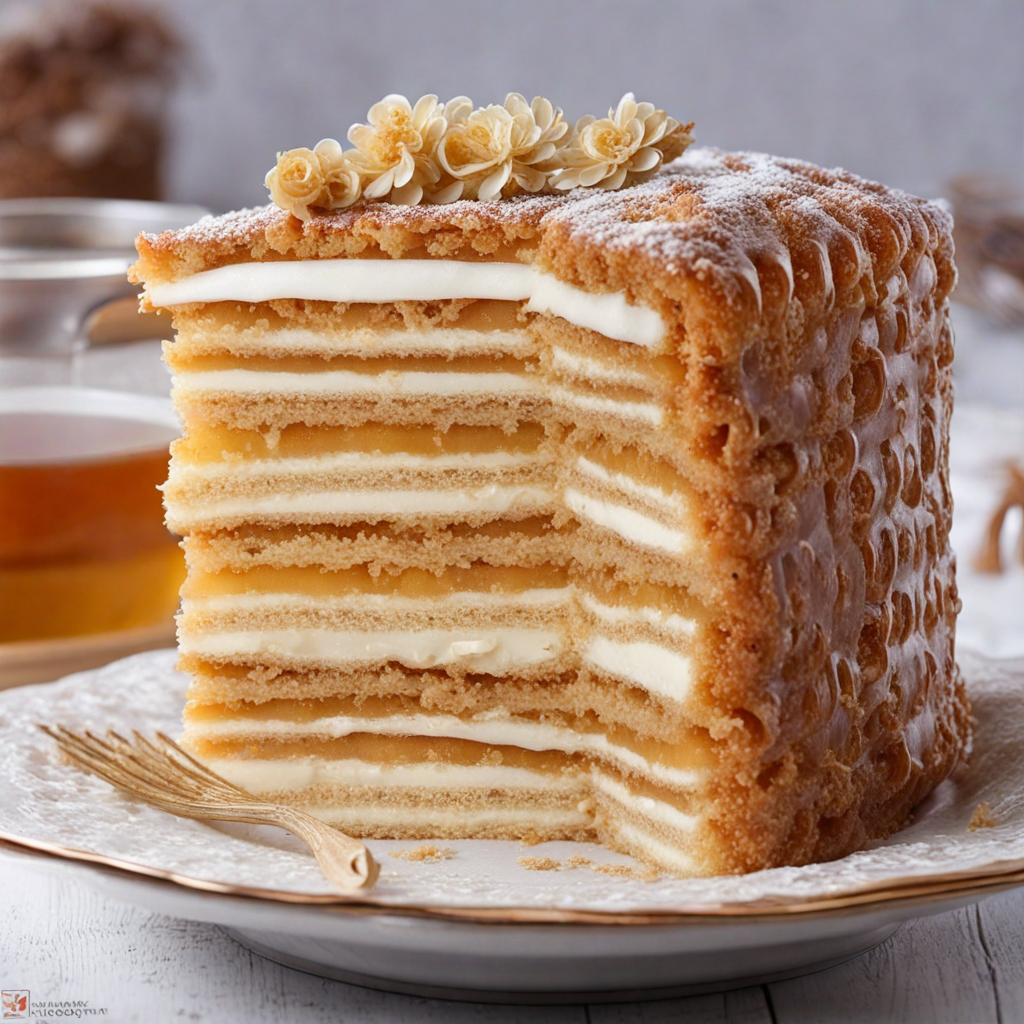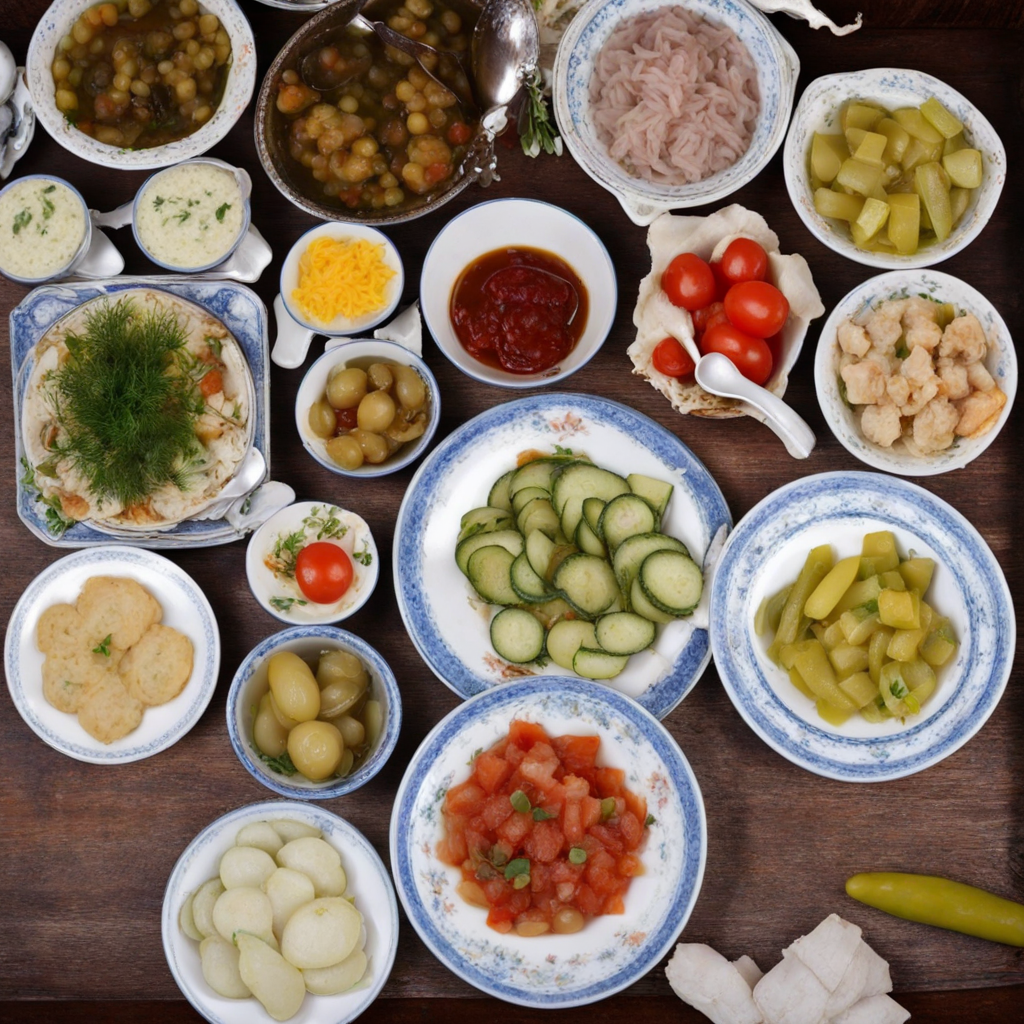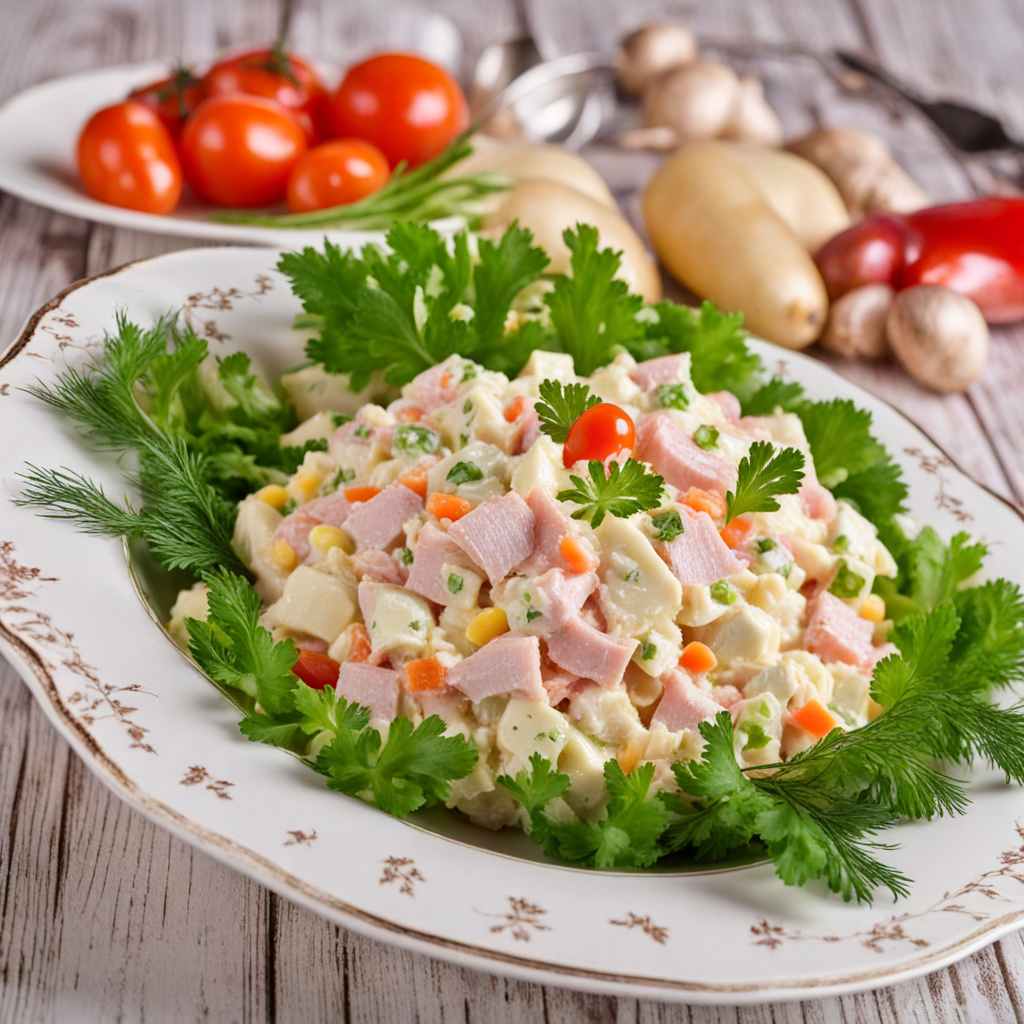Syrniki
Syrniki are delightful Russian cheese pancakes that embody a perfect balance of soft, fluffy texture and rich flavor. Made primarily from tvorog, a type of fresh cheese similar to cottage cheese, these pancakes are mixed with flour, eggs, and a hint of sugar, creating a batter that is both simple and satisfying. The result is a golden-brown exterior that yields to a creamy, slightly tangy interior, making each bite a comforting experience. Syrniki are often served warm, showcasing their inviting aroma and enticing appearance. Traditionally, Syrniki are enjoyed for breakfast or as a dessert, and they can be paired with an array of toppings. A drizzle of honey or a dollop of sour cream enhances their flavor profile, while fresh berries or fruit preserves add a vibrant sweetness that complements their richness. Some people even enjoy them with a sprinkle of powdered sugar for an extra touch of indulgence. The versatility of Syrniki allows for endless combinations, making them a beloved dish across various regions of Russia. Beyond their delicious taste, Syrniki hold cultural significance, representing a cherished home-cooked meal that evokes feelings of nostalgia and comfort. They are often prepared in family kitchens and served during festive gatherings, reflecting the warmth of Russian hospitality. Whether you're savoring them in a cozy café or making them at home, Syrniki offer a unique culinary experience that invites you to explore the heart of Russian cuisine.
How It Became This Dish
The History of Сырники: A Culinary Journey Through Time #### Origins Сырники, often referred to as Russian cheese pancakes, are a beloved traditional dish that epitomizes the comfort and simplicity of Slavic cuisine. The word "сыр" translates to "cheese" in Russian, and "ники" is a diminutive suffix, making сырники a charming term that evokes warmth and nostalgia. Their primary ingredient is творог, a type of fresh curd cheese, which has been a staple in Eastern European diets since ancient times. The origins of сырники can be traced back to the rural regions of Russia, where dairy farming was prevalent. The Slavic people, known for their agrarian lifestyles, relied heavily on dairy products, particularly during the long winters when fresh produce was scarce. Tворог, made from the curds of soured milk, was an essential part of their diet. With its mild flavor and versatile nature, it became the perfect base for various dishes, including сырники. Historically, сырники were likely prepared as a way to utilize leftover творог and stale bread, reflecting the resourcefulness of rural households. This practice aligns with the broader culinary traditions of utilizing every part of available ingredients, a principle that has long characterized peasant cooking across cultures. #### Cultural Significance Сырники hold a special place in Russian culinary culture, often served as a breakfast item or a delightful snack. They are frequently enjoyed with a dollop of sour cream, a drizzle of honey, or a sprinkle of sugar, making them a versatile dish that caters to both sweet and savory palates. In many households, the preparation of сырники is steeped in familial tradition, with recipes passed down from generation to generation. The dish is emblematic of the "cottage food" movement, reflecting the values of home cooking and the importance of family meals in Russian culture. In a society where communal dining is cherished, сырники not only nourish the body but also foster connections among family members and friends. They are often associated with gatherings, celebrating milestones, or simply enjoying a leisurely day at home. Moreover, сырники are a representation of the broader cultural identity of Eastern Europe. They share similarities with other Slavic dishes, such as the Ukrainian "syrnyky" and the Polish "pierogi," highlighting the interconnectedness of culinary traditions across the region. Such dishes serve as a reminder of the shared history and cultural ties that bind these nations together. #### Evolution Over Time As with many traditional dishes, the preparation and presentation of сырники have evolved over the years. The basic recipe has remained largely unchanged, comprising творог, flour, eggs, sugar, and a pinch of salt. However, modern culinary influences have introduced variations in flavor and texture. In the early 20th century, as Russian society underwent significant transformations, including urbanization and industrialization, the way сырники were made began to change. With more people moving to cities and living in smaller apartments, traditional cooking methods adapted to fit the fast-paced urban lifestyle. This shift led to the commercialization of various ingredients, including pre-packaged творог, which made the preparation of сырники quicker and more accessible. The influence of globalization has also impacted the dish. In contemporary times, сырники have found their way into international cuisine, often appearing on brunch menus in trendy cafes around the world. Chefs experiment with the classic recipe, incorporating diverse ingredients like berries, chocolate, or nuts, which appeal to a more global palate. This fusion demonstrates how traditional foods can be revitalized while still honoring their roots. In recent years, there has been a renewed interest in traditional cooking and the farm-to-table movement, which has led to a resurgence of сырники in their most authentic form. Many chefs and home cooks are returning to age-old techniques, emphasizing the use of high-quality, locally sourced ingredients. This revival reflects a growing appreciation for heritage foods and the stories they carry. #### Making Сырники The preparation of сырники is both an art and a science. The process begins with the selection of the right творог, which should be fresh, dry, and crumbly. Too much moisture can lead to soggy pancakes, while too little can yield a dry texture. After mashing the творог, it's combined with flour, eggs, sugar, and sometimes a hint of vanilla or lemon zest, creating a pliable dough. Once the mixture is formed into small patties, they are pan-fried until golden brown, resulting in a crispy exterior and a soft, creamy inside. The cooking method is crucial; achieving the perfect balance of texture requires attention and skill. The simplicity of the ingredients belies the complexity of flavors that can be achieved through careful preparation. #### Conclusion Сырники are more than just a simple dish; they are a testament to the resilience and creativity of the Russian people. This humble cheese pancake has stood the test of time, adapting to changing societal norms and culinary trends while maintaining its core essence. As a symbol of comfort and familial bonds, сырники continue to hold a cherished place in the hearts of many. In an ever-globalizing world, the dish serves as a reminder of the importance of cultural heritage and the stories that food can tell. Whether enjoyed in a rustic village or a modern café, сырники connect people across generations and geographies, celebrating the rich tapestry of Slavic culinary traditions. As they continue to evolve, they remain a delicious link to the past, an embodiment of community, and a beloved staple on tables throughout Russia and beyond.
You may like
Discover local flavors from Russia







